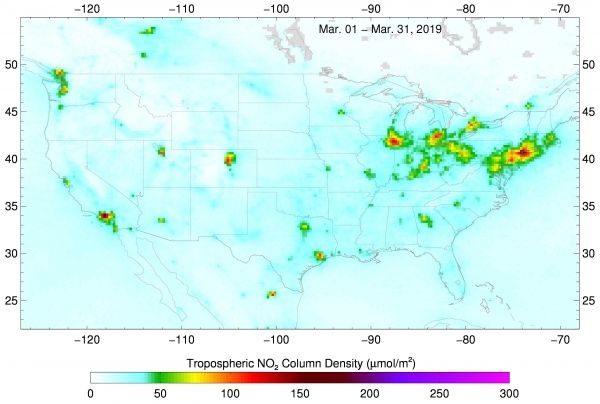“The unintended drop in air pollution levels have become evident,” said Mitch Goldberg, chief program scientist of NOAA’s Joint Polar Satellite System (JPSS). “Observations collected from JPSS and partner satellites are giving NOAA scientists the ability to see how urban and industrial locations contribute to a region’s air pollution through the emissions of gasoline-based gases and fine particles.”
Nitrogen Dioxide (NO2) is a key component of urban air pollution. As gasoline-based vehicular traffic drops, so do NO2 emissions and airborne particulate pollution. NOAA scientists looked for the signals of decreased NO2 emissions by using instruments on the NOAA/NASA Suomi-NPP satellite and on the European Space Agency’s (ESA) Sentinel-5P satellite.
Because the COVID-related slowdown in most parts of the U.S. began in mid-March, scientists looked at both NO2 and airborne particulates for March 2019 (pre COVID-19) and March 2020 (during COVID-19). They also compared the differences between weekdays versus weekends during the same time period.
Continue reading at NOAA National Environmental Satellite, Data, and Information Service (NESDIS)
Image via NOAA National Environmental Satellite, Data, and Information Service (NESDIS)


